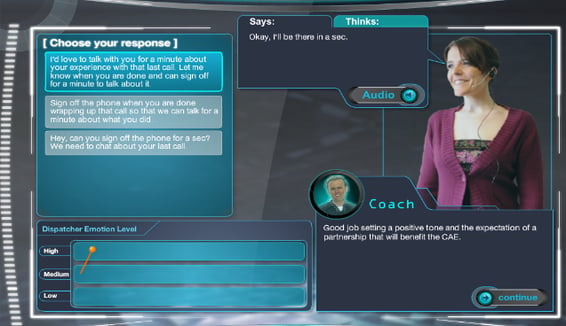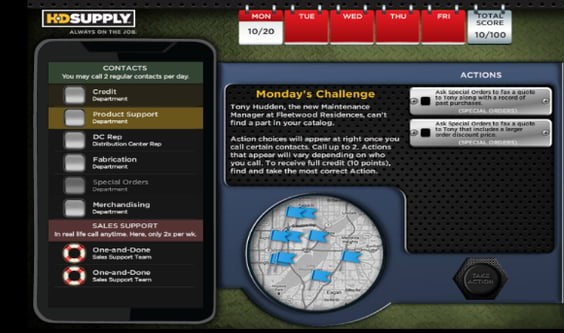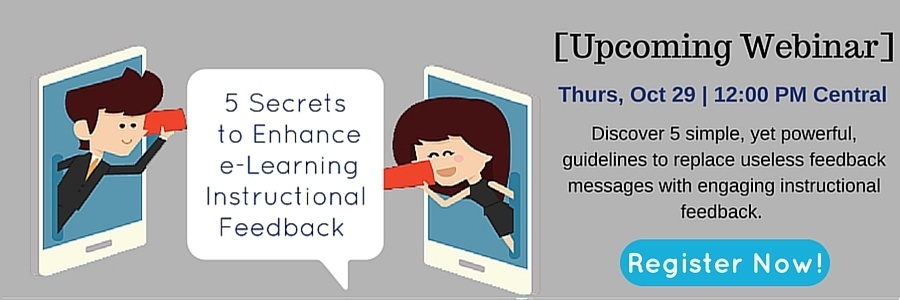Blog
5 Powerful Ways to Improve Instructional Feedback in Your e-Learning Designs
By Linda Rening, PhD, Instructional Designer At a conference recently, someone said, “We’ve taken the worst part of instructor-led training, put it ...


5 Strategies for Leveraging the Best of ILT for Designing Engaging e-Learning
By Linda Rening | October 27, 2015 | Custom Learning | 0 Comments
B.png?t=1445459820550&width=125&name=linda(250).png) y Linda Rening, PhD, Instructional Designer
y Linda Rening, PhD, Instructional Designer
At a conference recently, someone said, “We’ve taken the worst part of instructor-led training, put it online, and called it e-learning.” He's absolutely right. From what I’ve seen, most e-learning consists of PowerPoint slides converted to Storyline, with full narration of everything that is on the slide.
Case in point: I was visiting my sister this summer, and she needed to take her yearly online “compliance” refresher training one morning during my visit. When we got together for lunch later, I asked her how her morning had been. She replied, “It was great! I got so much done!”
That seemed strange, so I said, “You mean, you got through the whole e-learning course, right?”
She said, “Oh, yeah, that was no big deal. But I also finished the laundry, cleaned up the kitchen, and mixed up a batch of muffins.”
I asked, “How could you do all of that?”
She said, “It’s easy. I started the e-learning course, and turned up the volume. Then, when the speaker stopped talking, I’d go back to the computer and click the Next button.”
At that point, I gave up. While I congratulated her on her industriousness, I thought: what a terrible commentary that is on our profession!
How dare we call narrated slide presentations training? Do we know so little about how people learn that we can be satisfied with that? It’s no better than handing someone a textbook, and saying, “Here’s your training course.”
So, yeah, we’ve taken the most boring part of instructor-led training (ILT) and put it online. Doesn’t that beg the question: what’s the best part of ILT, and why can’t we put that online?
The goal of both ILT and e-learning is the same: facilitate acquisition of new knowledge and skills, combined with the appropriate attitude, to change behavior and improve performance outcomes. In both media, we:
- Strive to make content relevant—Meaningful—for learners
- Work to create activities that will anchor—make Memorable—new behaviors and new ways of solving problems
- Want to show learners the advantages of the new way of doing things so they are inspired—Motivated—to adopt new behaviors.
The guiding principles for good learning experiences is that they need to be Meaningful, Memorable, and Motivational. How can we do that online? The best part of ILT, for most people, is the activities in which they participate by themselves or with others in small groups.
I hope this isn’t a news flash for anyone, but it is possible to create those same in-person activities online, as well. You’ll be able to come up with wonderful things on your own, but to get you started thinking, here are some ILT training activity-based learning strategies with their e-learning corollaries.
ILT Strategy |
e-Learning Strategy |
|
Problem solving in a small group |
Present a real-to-life scenario presenting a problem similar to those which learners need to solve. Show pictures of people who look like they may be in the same workgroup as the learner. Direct the learner to select each image to read what that person has to say about how to solve the problem. Then, ask learners to select the individual(s) who are giving good advice. In a follow-up multiple-choice question ask the learner why the advice they chose was correct. Or, require learners to type in their rationale for selecting that advice. |
|
Practicing a task in new software |
Create a “sandbox” environment of the software populated with real-to-life data. Divide the task learners must do into groups of steps of no more than five steps. Then follow this sequence with each group of steps:
|
|
Role-playing |
Choose an image that looks like a typical customer with a thought bubble containing a statement or question that customers actually might articulate. Ask learners to choose the best response. Show the customer’s reaction with a change in facial expression and in a spoken response. Then ask the learner to choose the right way to respond to what the customer said. At that point the learner can: proceed successfully to the next part of the conversation, or try to get the conversation back on track, or fail and have to start over. Realistic questions and answers are crucial to the success of this kind of interaction.
|
|
Label diagrams during presentations |
Give learners images or diagrams with blank spaces that they must label. If there are a lot of labels, provide a list of words on the side of the screen. Have them enter the correct text in the correct place on the image or diagram. Or, depending on the device, ask learners to drag the correct label to the correct part of the diagram. |
|
Drill and practice |
Create a Jack-attack-style game. For example, to reinforce product specifications when training sales people, have the specs appear on the screen one at a time. Mix in words or phrases that aren’t specifications. Direct learners to select the words or phrases that are specifications for that particular product. Give them the option to stop the activity and read a list of specifications any time they want to review. |
|
Competition |
ILT participants love competing individually and in small groups. The e-learning corollary is adding timers and success meters. Use timers in situations where time really does matter, like when learners are face-to-face with customers. Here are some ideas:
Similarly, success meters work in situations where cumulative decision-making matters.
|
I hope some of those strategies will be helpful for you. No matter what, though, I need you to make me a promise. Raise your right hand and solemnly swear that you will never create a training program that is so boring and predictable that it results in folded laundry, a clean kitchen, and a plate of muffins.
LIKE WHAT YOU'VE READ? SHARE THE KNOWLEDGE WITH THIS READY-MADE TWEET!
CLICK TO TWEET: 5 Strategies for Leveraging the Best of #ILT for Designing Engaging #eLearning http://hubs.ly/H01kSTR0 #aiblog
.png?width=135&height=135&name=linda(250).png)
About the Author: Linda Rening
Comments
Would you like to leave a comment?
Related Blog Posts

By: Linda Rening | Oct, 2015
Category: Custom Learning

Blog
A Commencement Address for e-Learning
By Linda Rening, PhD, Instructional Designer At a conference recently, someone said, “We’ve taken the worst part of instructor-led training, put it ...
By: Linda Rening | May, 2015
Category: Custom Learning, Strategic Consulting

Blog
Change Management: Leading During the Change
By Linda Rening, PhD, Instructional Designer At a conference recently, someone said, “We’ve taken the worst part of instructor-led training, put it ...
By: Linda Rening | May, 2022
Category: Strategic Consulting, Change Management




